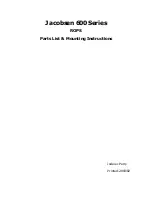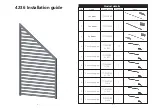
Testing and measuring
56
5.2.6
Test sequence
The test can be carried out automatically, semi-automatically or manually for each DUT.
Example: “F1: Automatic test sequence”.
During manual and semi-automatic testing, UNIMET® 1100ST saves the “worst” measured
value in each case. When measuring leakage currents and the PE conductor resistance, this
is the highest measured value; when measuring insulation resistance, this is the lowest
measured value.
5.2.7
Master data
Once the classification of the test sequence is complete, UNIMET® 1100ST will display the
master data screen containing the master data already defined. You have several options
from this screen:
●
Edit/complete master data
●
Start measurement
●
Save classification in type or device catalogue.
Automatic test
sequence
During automatic testing, the test probe or test terminal comes into
contact with one point of the DUT. The test sequence then runs
through all test steps automatically.
Semi-automatic
test sequence
During semi-automatic testing, there is a break after certain
measurements have been taken. This break can be used to repeat
measurements or to take measurements at different “points” on the
DUT. Start the test step within 15 seconds by pressing Enter or by
bringing the test probe into contact with the DUT. If the test step is
not started in this way, the current test step is measured once after
15 seconds and the test then continues as during automatic testing.
Manual test
sequence
During manual testing, it is possible to repeat each test step as often
as required, thereby bringing the test probe into contact with a
number of accessible parts on the DUT consecutively.
Summary of Contents for UNIMET 1000ST
Page 50: ...Operation and setting 50 TGH1256en 10 2005...
Page 80: ...PC compatible functions of the UNIMET 1100ST 80 TGH1256en 10 2005...
Page 82: ...Maintenance and calibration 82 TGH1256en 10 2005...
Page 90: ...Options and accessories 90 TGH1256en 10 2005...
Page 96: ...Data 96 TGH1256en 10 2005...
Page 99: ......
















































